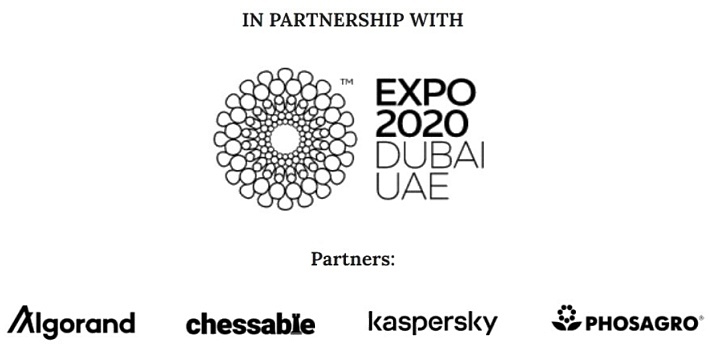The voice of master of ceremonies Maurice Ashley booms out of the darkness, welcoming those gathered in the theatre of the Dubai Exhibition Centre South Hall to the FIDE World Championship 2021.
At the very front of the stage, dozens of photographers crowd towards the playing area, visible behind three huge panes of glass, the board and chairs centred behind the middle pane. Challenger Ian Nepomniachtchi appears briefly about 20 minutes before the start of play, surprisingly early, perhaps to acclimatize to the penultimate new experience, being surrounded by a media frenzy of unaccustomed proportions. After this, only the novelty of playing a game for the world title remains.

Maurice begins with some opening words of praise for the organizers before calling the player onstage in turn, challenger first. The first move is executed by FIDE President Arkady Dvorkovich, accompanied by Sheikh Sultan bin Khalifa Al Nahyan and Sheikh Saud bin Abdulaziz Al Mualla, both prominent chess figures in the region.
As the photographers snap away, play starts and the game begins. It follows the sage prediction of Anish Giri – the elite grandmaster from the Netherlands told social media followers earlier in the day that his heart hoped for an Italian Opening, but his brain said Spanish – and with his third move, Nepomniachtchi showed he reached the same conclusion.
Body language
Watching two people play chess for hours has been a hard sell over the years, but more and more spectators are acquiring a taste for it. While it helps to have lively expert commentary to educate and entertain during the long thinks – and the chess world has never been as spoilt for choice as in the coverage of the Dubai match – the real secret to enjoying a match is gradually immersing oneself in the study of body language.
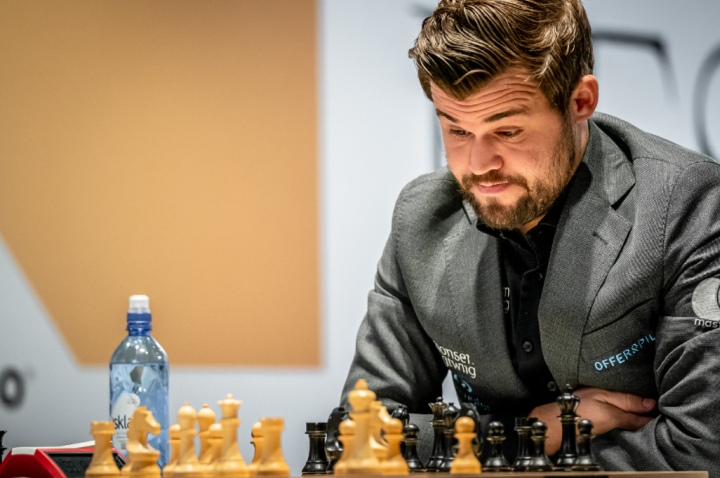
Both revealing and mysterious, the details of facial changes and fidgets hint at the hidden inner turmoil of these apex thinkers, and the longer you watch, the more you believe you can see.
The first hesitation as the players reel off their surely deep, computer-assisted, opening preparations is usually a significant moment. It appears to come from champion Magnus Carlsen, whose face darkens. He rubs his face, raises his eyebrows, but after only a small pause makes his decision, sacrificing a pawn for active play.
On move 14, the players’ quick replies raise expert eyebrows and convince them the combatants are still in their prepared lines. Grandmasters scrutinizing these unexpected decisions agree that to be played so fast, they had to be the product of their training camps. The normally speedy challenger slows first, but by move 17, both regularly sink into deep thought. Now they appear to be on their own, and are tackling the subtle problems on the board head-to-head.
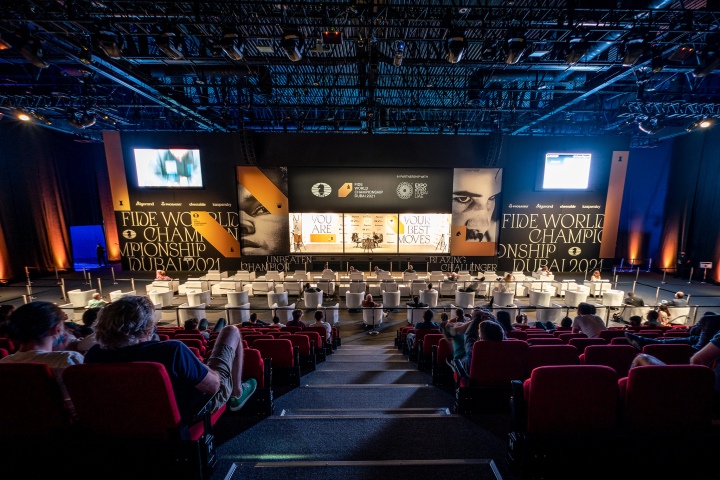
Global scrutiny by man and machine
The stereotyped roles are reversed in a tense middle-game without queens, where the normally swashbuckling challenger is on the defensive, hoping to gradually shake off the pressure and make use of his extra pawn, while the typically technical champion has sacrificed material to enjoy the momentum gained in return. The bottom line is that both players are versatile – and willing to see who is better out of their customary comfort zones.
Giri combines detailed online chess commentary with body language scrutiny, pausing to assess the speed and meaning behind Carlsen’s sudden flurry of blinks while thinking. Supercomputers also examine the game, which is in a delicate balance, with microscopic fluctuations in both directions. Previous title challenger, US grandmaster Fabiano Caruana, explains strategic subtleties on another online broadcast, revealing the long-term potential behind the champion’s sacrifice.
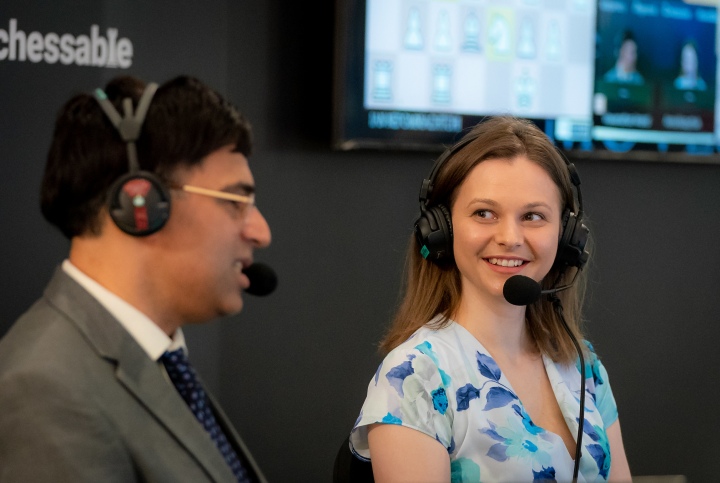
Former world champion Vishwanathan Anand tells spectators at the venue similar tales – the general consensus is that a draw is likely, but anything could happen thanks to the tension. Verdict after about 30 moves – the simple position conceals complex tension, and may suit Carlsen better.
A shift in momentum
Carlsen’s 33rd move threatens to perforate the white position, and convinces his opponent the time has come to return his extra pawn and seek safety through simplification. The initiative had shifted to the Norwegian, but his advantage was still slender.
Once the players reached the first time check at move 40 – which they must complete within their allotted two hours – the position was balanced and drawn by repetition.
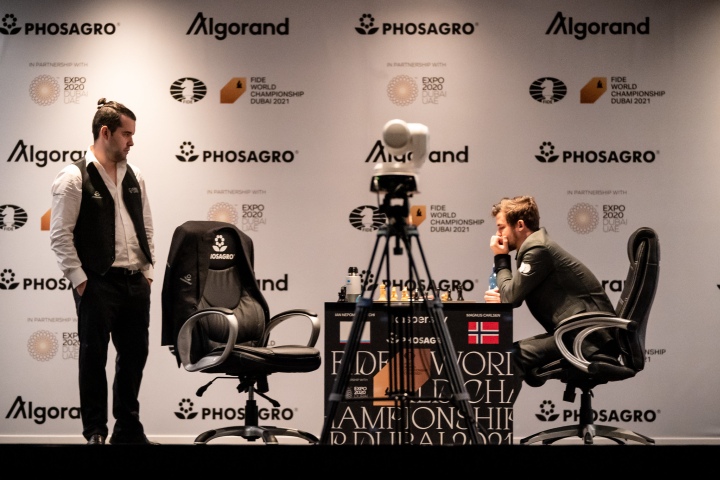
Post-game explanations
In the post-game press conference, Magnus said he assessed the final stage of the game as not offering real chances to win once Ian had opted to return the material and gain some activity for his pieces. Neither player seemed particularly pleased with the result, but both seemed satisfied.
Carlsen confessed to feeling “a bit shaky at times” and that there were things he could have done better, but a draw was a fair result. Nepomniachtchi summed up his reaction: “I feel like you feel after a draw with the white pieces. It’s quite a usual result nowadays, but still, you want more.”

The players jokingly dodged efforts to get them to reveal their teams of assistants, and Ian shrugged off questions about the sense of occasion, reiterating that as soon as the game starts, his focus was just on doing what he has been doing since childhood, playing chess.
The conference ended with a fitting question from FIDE’s Twitter followers, notably: How much do you dread post-game press conferences? Do you just want it to be over, or do you use it as a time of rest? – sent in by ‘Matt Beef’. Although the query amused the players, they both gave serious answers:
Magnus Carlsen: I think it depends very much on the situation. At the moment, with only the first game played, and not much has happened, it’s OK and I guess, a way to relieve the stress a bit after the first one.
Ian Nepomniachtchi: I guess it’s a part of the job of the professional sportsman, so I think I come here and I try to speak.
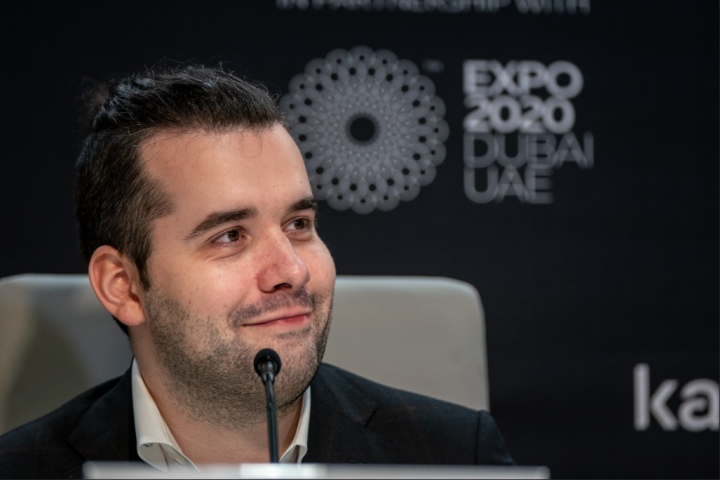
FACT SHEET, Game 1:
White: Challenger Ian Nepomniachtchi, CFR
Black: Champion Magnus Carlsen, Norway
Result: ½-½ Drawn by repetition
Length: 45 moves
Opening: Ruy Lopez/Spanish
Variation: Anti-Marshall
Text: Jonathan Tisdall, Press Officer press@fide.com
Photo: Eric Rosen and Niki Riga
Official website of FIDE World Championship Dubai 2021
